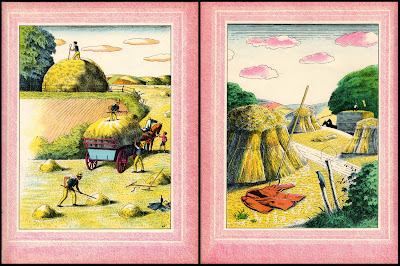
A year-end treat for cat lovers lithographed with characteristic subtlety by the under-rated Eileen Mayo for Puffin Picture Book 84 in 1951. Beautifully composed and immaculately rendered, it’s typical of the exceptionally high standards maintained in this series of books for children. Chris Mullen at the Visual Telling of Stories (VTS) has tirelessly scanned the entire book for your pleasure. It’s exactly 70 years since the first four Puffin Picture Books were published in December 1940. These modest illustrated books for children, with their distinguished continental ancestry in France (Père Castor) and the Soviet Union (Vladimir Lebedev) have ever since been held in high regard. Their enduring appeal is a tribute to the enlightened editorial policies of Noel Carrington and the impressive depth of colour achieved by the printers, Cowell’s of Ipswich. The format was dictated by the need, in the interests of wartime economy to print each book on a single sheet of paper with colour on one side and black and white on the reverse. This would produce a 32 page book ready for cutting and binding in a single pass. The challenge for the artists was to draw directly on a plate for each colour separation. The contrasting styles of artists of very different approaches and graphic techniques were unified by the distinctive production process. This is my modest tribute to the graphic excellence that makes these books so special. For a much more comprehensive and considered overview I must direct the reader once again to VTS.


































